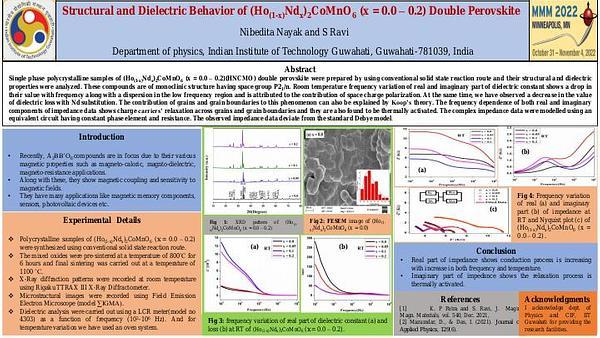Would you like to see your presentation here, made available to a global audience of researchers?
Add your own presentation or have us affordably record your next conference.
The usage of antibody selective biding for the detection of biomolecules provides a fast and low-cost testing platform. The most common type of antibody selective biding
bio-detection tags the bio-molecule of interest with a visual marker. An example of this type of bio-detection is the lateral flow immunoassays like the pregnancy or rapid COVID tests 1.
These visual nanotags are a valid solution for binary detection in high concentrated samples. To have a quantifiable and high sensitivity bio-sensing we use magnetic nanoparticles. The
measurements of this type of magnetic nanotags require expensive laboratory equipment. A novel method using the self-resonant frequency (SRF) of inductors allows high sensitivity with
low-cost and portable systems.
Using the equivalent impedance calculation 2 and the Lichtenecker’s mixing formulas 3 we extracted an analytic simplification to describe the relation between masses of nanomaterial
in the sensing area to variations of the SRF of the inductor. The model correlates variations of the refraction index of the nanotag making the technique able to quantify not only magnetic
nanotags but other types of nanomaterials like gold or latex.
The mathematical model and its simplifications are tested against electromagnetic simulations and experimental measurements. These verifications demonstrate the validity of the model,
the value of magnetic nanoparticles as nanotags for precise quantification, and the advantages of the SRF measuring method for low-cost, high-sensitivity systems.
References:
1] Moyano, A. et al., 2020. Magnetic Lateral Flow Immunoassays. Diagnostics.
2 Qin Yu. et al., 2002. RF Equivalent Circuit Modeling of Ferrite-Core Inductors and Characterization of Core Materials.
3 A.V. Goncharenko. et al., 1999. Lichtenecker’s equation: applicability and limitations.

